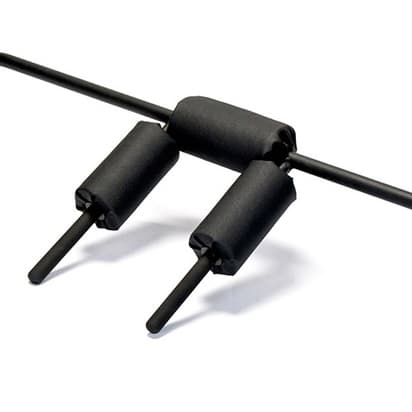How to Lift Heavier Weights (Video Included)
Building muscle helps prevent injuries and improves balance, stability, and flexibility — all of which we’re at greater risk for as we age. But you’ll only gain a fraction of that if you push yourself to your limits with heavy weights. To build muscle, the key is to gradually lift heavier weights. Not only does lifting weights help you build muscle and increase bone density, but in some cases, it’s also been shown to help increase metabolism and even cognitive function.
The thing about lifting weights is that you can’t just walk up to the dumbbell rack and pick up a big dumbbell. If you’re new to strength training, or are currently doing resistance training but want to gradually lift heavier weights, you need to follow a planned approach. Ready to trade in a 10-pound barbell for a 50-pound barbell, or an empty barbell for a loaded barbell? These five simple steps can help you get there. Here are the basics on how to lift heavier weights.
1. Know Your Level
Check your self-esteem. Before you lift heavier weights, you need to be honest about your current ability level. Understanding how your current fitness level relates to resistance training can help you choose a program and progress appropriately as you lift heavier weights.
The American College of Sports Medicine (ACSM) considers you a beginner if you’ve been resistance training consistently for less than six months. If you’ve been training consistently for more than six months, you’re an intermediate, and if you have years of resistance training experience and have made significant improvements in your muscle fitness, you’re an advanced.
2. Master Proper Form
No matter what level you are at, there’s one prerequisite you need to address before lifting heavier weights: form. First and foremost, every strength athlete, amateur or professional, must execute with perfect technique, world champion weightlifter and instructor in the Health and Wellness Studies Program at Binghamton University (SUNY). This technical proficiency is one of the key markers that indicate whether someone is ready to move on.
Form is critical when you attempt to lift heavier weights, because poor form or technique can put undue stress on joints, ligaments, and muscles, increasing your risk of injury—and heavier loads only compound that by bringing a greater risk of injury. For example, if your shoulders slack on the bench, your elbows drift, or your lumbar spine unlocks during a deadlift or squat, your risk of injury increases exponentially. If you’re training on your own with relatively low loads and feel confident in your abilities, you can use a mirror, camera, or the Self-Mode feature on the Peloton Guide to keep an eye on your form. If you really want to lift heavier weights, you may also want to enlist the help of a trainer who can give you real-time feedback.
3. Follow a Routine
This is important because consistency and repetition are necessary to build strength. Most studies on the effects of resistance training follow participants for at least four weeks, and there’s a reason for that: Building strength takes time. The good news is that beginners should see strength gains pretty quickly, according to the ACSM.
Your current resistance training level (beginner, intermediate, advanced) will determine how often you should train and how you divide up your sessions. The ACSM recommends that beginners train their entire body two to three days per week, intermediate exercisers continue this frequency or try three to four days per week (dividing training by muscle group), and advanced lifters train four to six days per week.
4. Push your limits with progressive overload
Your training program should gradually increase the demands on your muscles. This principle is called progressive overload; it’s the process of continually challenging your neuromuscular system with gradual increases in time, weight, or intensity, and it’s essential to seeing the effects of resistance training over time.
One of the most straightforward ways to use progressive overload in strength training is to gradually increase the weight you lift. How do you know when you’re ready to go heavier?
A handy rule of thumb is the “two-for-two” rule, which is recommended by the American College of Sports Medicine and the National Academy of Sports Medicine (NASM). The rule states that if you can do two more reps of a given exercise with perfect form in two consecutive workouts, you’re ready to progress. At this point, you should increase the weight by 2 to 10 percent in your next workout, or make the smallest possible increase with the weight you have on hand. For example, if you can comfortably lift 30 pounds on your chest and are ready to progress, you should ideally increase your weight by no more than 3 pounds; however, most dumbbell sets in the gym don’t have such small increments.
How many reps should you do first?
The ACSM recommends that beginner to intermediate lifters use moderate weights for 8-12 reps, and intermediate to advanced lifters use 1-12 reps, eventually working their way up to just 1 to 6 heavy reps.
If you’re a beginner or recreational lifter struggling with these higher reps, you can also increase your reps based on how you feel. If you can comfortably do 12-15 reps, that’s a good sign that you’re ready to challenge yourself with heavier weights. The last few reps in your set should be a struggle that you’re proud to have overcome.
5. Consider Recovery
No matter how hard you work in the gym, if you don’t support your strength gains with proper nutrition and recovery, you likely won’t see the same results.
Give your muscles time to recover properly and make sure you’re fueling properly, too. When you lift heavier weights, your muscle fibers are breaking down, so they need time and energy to fully recover. This includes eating plenty of protein to optimize muscle protein synthesis, the process of building new muscle tissue.
According to the National Strength and Conditioning Association (NSCA), training too much without proper recovery can lead to chronic fatigue, decreased performance, and ultimately injury. Don’t underestimate rest days and a good night’s sleep. I like to take this approach—the harder I work out, the deeper my recovery should be.
In addition to taking a few days off as needed in your training plan, it makes sense to occasionally take a rest week, during which you can reduce or pause your training for a week to give your body a chance to rest more thoroughly.
Key Takeaways
Lifting heavier weights can be simple or very complex, especially if you move to more advanced training. But regardless, the key principles remain the same: Focus on proper form first, stay consistent, and continue to challenge yourself at a reasonable level.
If things are going slower than you thought, remember that you’re getting stronger, even if the weight you’re lifting feels like a small difference.



